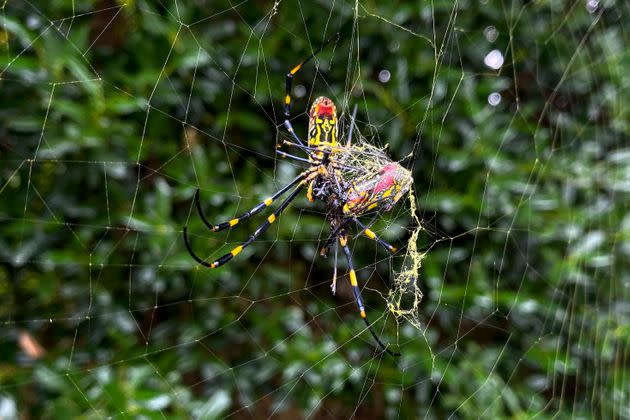There's Probably No Stopping Big Invasive Spiders From Blanketing The East Coast
People living on the East Coast may soon be noticing some new eight-legged neighbors.
Joro spiders, invasive palm-sized spiders that have become a relatively common sight in some Southeastern states, will likely be expanding their territory soon.
“No predators, it doesn’t have anything that’s controlling its population size in the new habitat, but it has perfect conditions to spread,” Benjamin Frick, University of Georgia student and co-author of a new study about the hardiness of the spiders, told local news station WGCL.
The study found that Joro spiders are well-equipped to survive cold temperatures, meaning they’re likely to thrive as their population spreads north.
Joro spiders have a distinctive bulbous yellow abdomens and yellow-striped legs. They also have the neat ability to use their webs like balloons or parachutes to ride the wind.
Originally they come from East Asia, but have been in the U.S. since at least 2013, when they most likely hitched a ride on shipping containers.

But though some people find them a little freaky ― one Georgia resident referred to the arachnids as “a big no” ― scientists emphasize that they pose no threat to humans and so far haven’t been shown to have any negative environmental impacts.
Last year, University of Georgia researchers said that the large numbers of spiders already seen in Georgia may actually be a good thing, since they were eating pests like mosquitoes.
Now the school, which increasingly seems like it’s run by spiders, has issued a statement making a similar case.
“There’s really nothing we can do to stop them,” a news release this week said. “But that’s not necessarily bad news.”
Andy Davis, a research scientist at the university and another study co-author, urged people to have some compassion, even if the spiders make them feel icky.
“People should try to learn to live with them,” he said. “If they’re literally in your way, I can see taking a web down and moving them to the side, but they’re just going to be back next year.”
This article originally appeared on HuffPost and has been updated.
